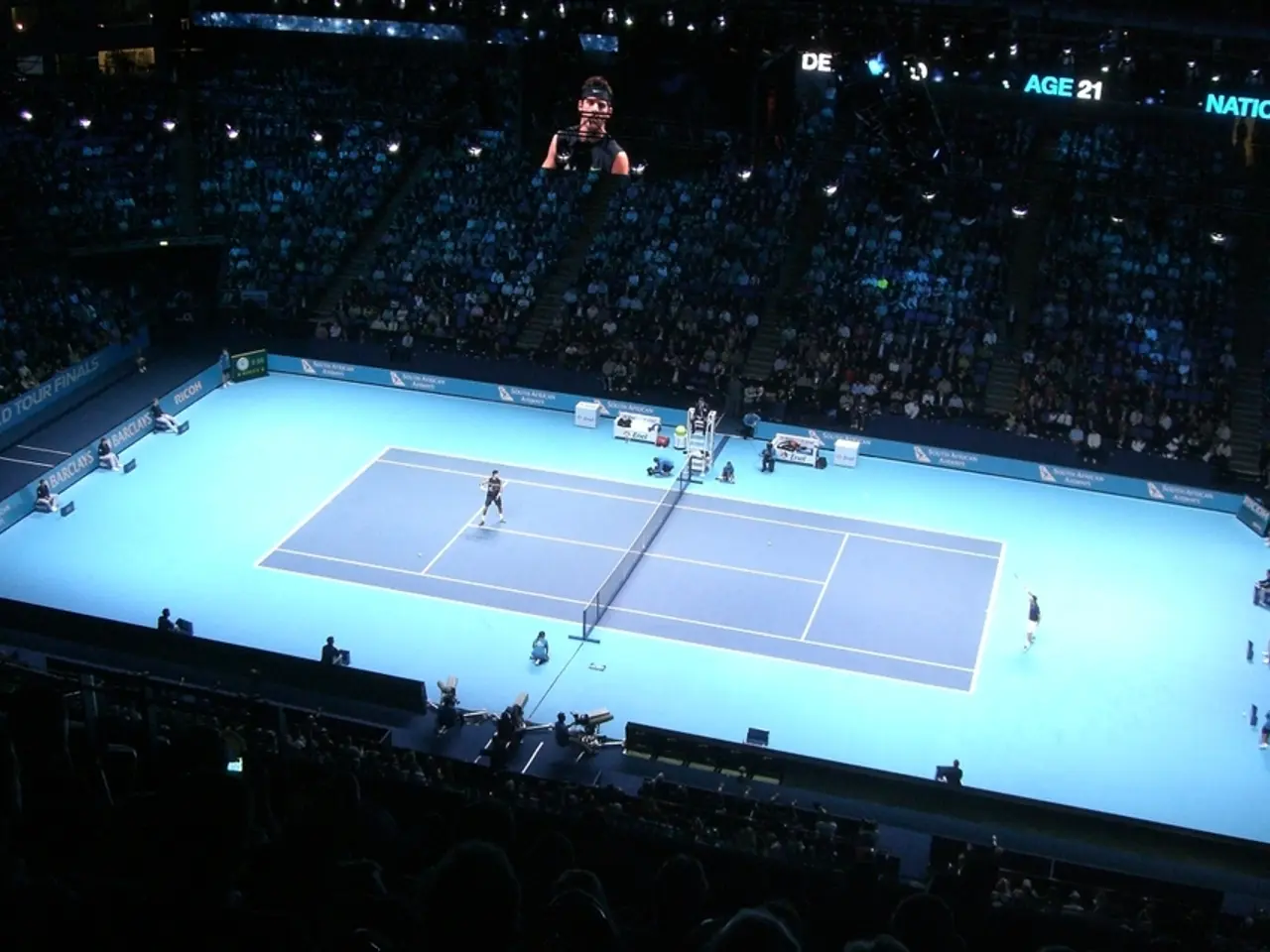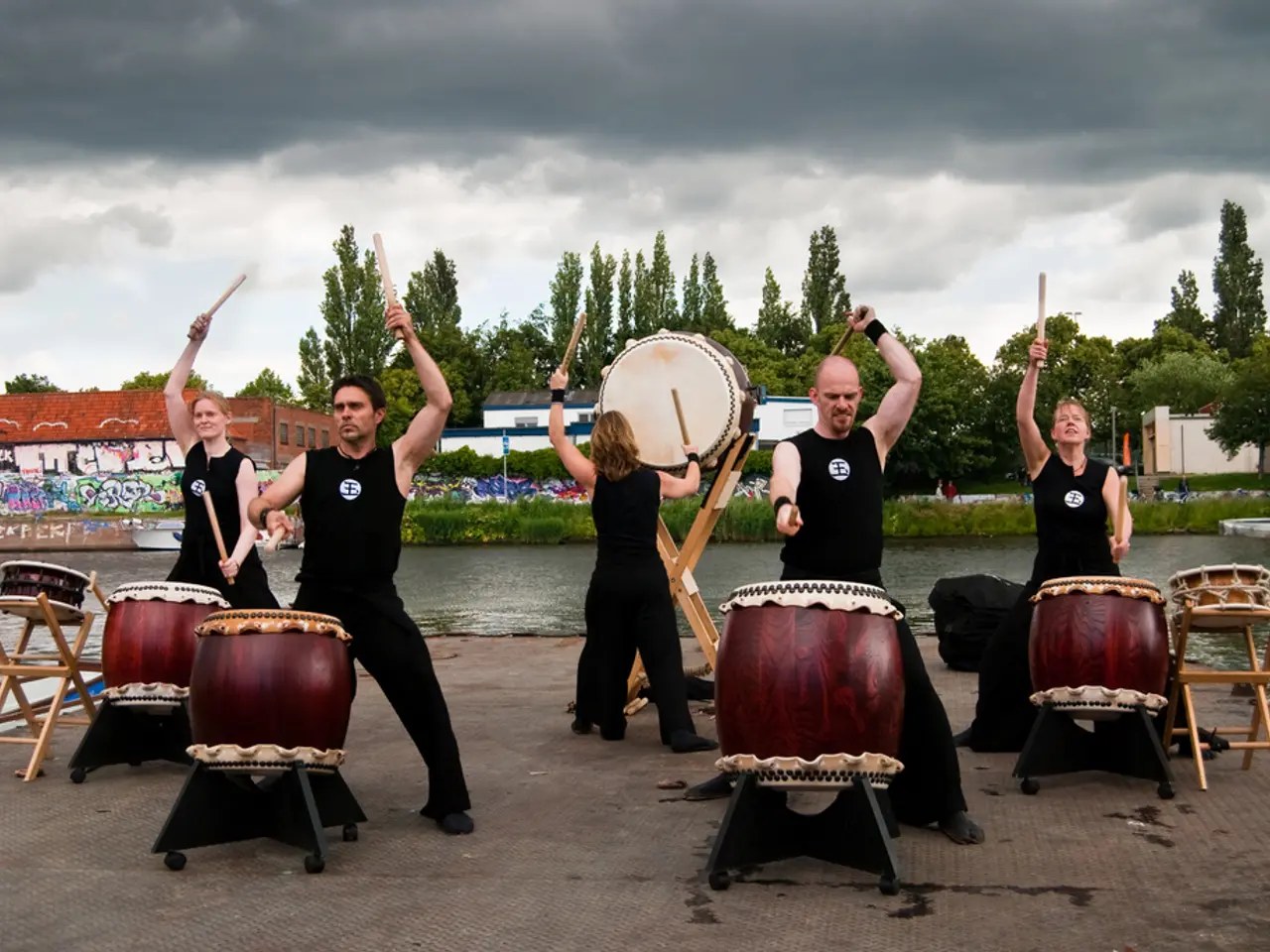At Wimbledon, the pause during the evening games is causing controversy
In the heart of London, England, the oldest tennis tournament in the world, Wimbledon, is once again captivating spectators with its unique blend of tradition and sporting excellence. This year, the tournament, played on the fastest grass courts in the world, has been marked by the historical second career appearance of 19-year-old player Jakub Mensik, and the exciting victory of American Ben Shelton.
Shelton, who qualified for the third round on July 4th, faced Australian Rinky Hijikata in a thrilling match that was interrupted due to insufficient lighting. The resumption of the match occurred approximately thirty minutes after the initial interruption, and Shelton emerged victorious with a score of 6-3, 6-2, 6-7(6), 6-4.
Wimbledon's traditions are as legendary as its matches. The tournament maintains a strict all-white dress code for players, a rule dating back to the 19th century. Members of the British royal family frequently attend the event and present trophies to the winners, adding a touch of regal elegance to the proceedings.
The tournament is also famous for serving strawberries and cream to spectators, a tradition that has been a part of Wimbledon's identity for decades. However, historically, Wimbledon did not schedule play on the middle Sunday of the tournament, known as a rest day. From 2022, play is now scheduled on this day, attributed to advancements in grass court maintenance.
Another unique feature of Wimbledon is the 11:00 PM curfew for all matches, a rule in place to protect local residents from late-night disturbances. Unlike other Grand Slam tournaments, Wimbledon does not have lighting systems on all its courts, causing matches to be suspended at nightfall.
Wimbledon also has strict etiquette rules for spectators, such as not cheering during rallies and only leaving seats during certain times in a set. The tournament employs Rufus, a hawk, to scare away pigeons and other birds from the grounds, ensuring clear skies during matches. There are specific rules about using glassware and opening corked bottles before entering the stands to maintain safety and etiquette.
These traditions, along with the interruption of matches at nightfall, spark controversy among some, but they undeniably add to the charm and allure of Wimbledon. As the tournament continues, it is sure to captivate thousands of spectators each year with its blend of history, tradition, and high-stakes tennis.
[1] "Wimbledon: The History of the Championships." BBC Sport, BBC, 1 July 2021, www.bbc.co.uk/sport/tennis/57826824. [2] "Wimbledon 2022: What's New at the Tournament?" BBC Sport, BBC, 27 June 2022, www.bbc.co.uk/sport/tennis/61a0e64b-973b-442e-a18f-73f5e4d2a80c. [3] "Wimbledon: A Guide to the Traditions." BBC Sport, BBC, 27 June 2022, www.bbc.co.uk/sport/tennis/61a0e64b-973b-442e-a18f-73f5e4d2a80c. [4] "Wimbledon: The History of the Championships." The Telegraph, The Telegraph, 24 June 2021, www.telegraph.co.uk/tennis/2021/06/24/wimbledon-history-championships-everything-need-know-2021/. [5] "Wimbledon: The Unwritten Rules." The Telegraph, The Telegraph, 24 June 2021, www.telegraph.co.uk/tennis/2021/06/24/wimbledon-history-championships-everything-need-know-2021/.
Ben Shelton's victory over Rinky Hijikata in the historic Wimbledon tournament this year was both thrilling and marked by the tournament's traditional restrictions, as the match was momentarily halted due to insufficient lighting, a common occurrence at Wimbledon due to the absence of lighting systems on all its courts. The tournament, known for its blend of tradition and sporting excellence, also maintains a strict all-white dress code for players, a rule that traces back to the 19th century.





